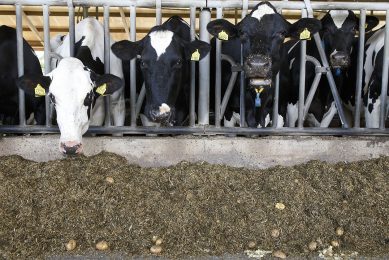Research: Fusarium mycotoxin in animal feeds in Korea
Korean researchers determined the occurrence of Fusarium mycotoxin beauvericin in animal feeds and the levels of that contamination.
Levels of beauvericin were analyzed in 52 samples of feed ingredients and 143 samples of compound feeds that were distributed throughout Korea during 2006 and 2007, using high-performance liquid chromatography.
It was found that 27% of feed ingredients were contaminated with beauvericin at levels of 0.01–1.80 μg/g (mean, 0.48 μg/g).
The mean concentration of beauvericin was highest in bran feeds (0.76 μg/g), followed by vegetable protein feeds (0.32 μg/g) and grain feeds (0.016 μg/g).
In compound feeds, 33% of samples were contaminated with beauvericin at levels of 0.01–4.66 μg/g (mean, 0.58 μg/g).
The proportion of contaminated feeds was higher in those for beef cattle (48%) than in those for dairy cattle (28%), swine (33%), chickens (35%), and aquaculture (no contamination).
The mean beauvericin concentration was higher in swine (0.74 μg/g) and dairy cattle (0.72 μg/g) feeds than in beef cattle (0.43 μg/g) and chicken (0.37 μg/g) feeds.
This is the first scientific report on the presence of beauvericin in animal feeds from East Asian countries, including Korea.
The reported results provide analytical data for possible national regulations for the toxin.
The full report can be obtained from Elsevier Science











